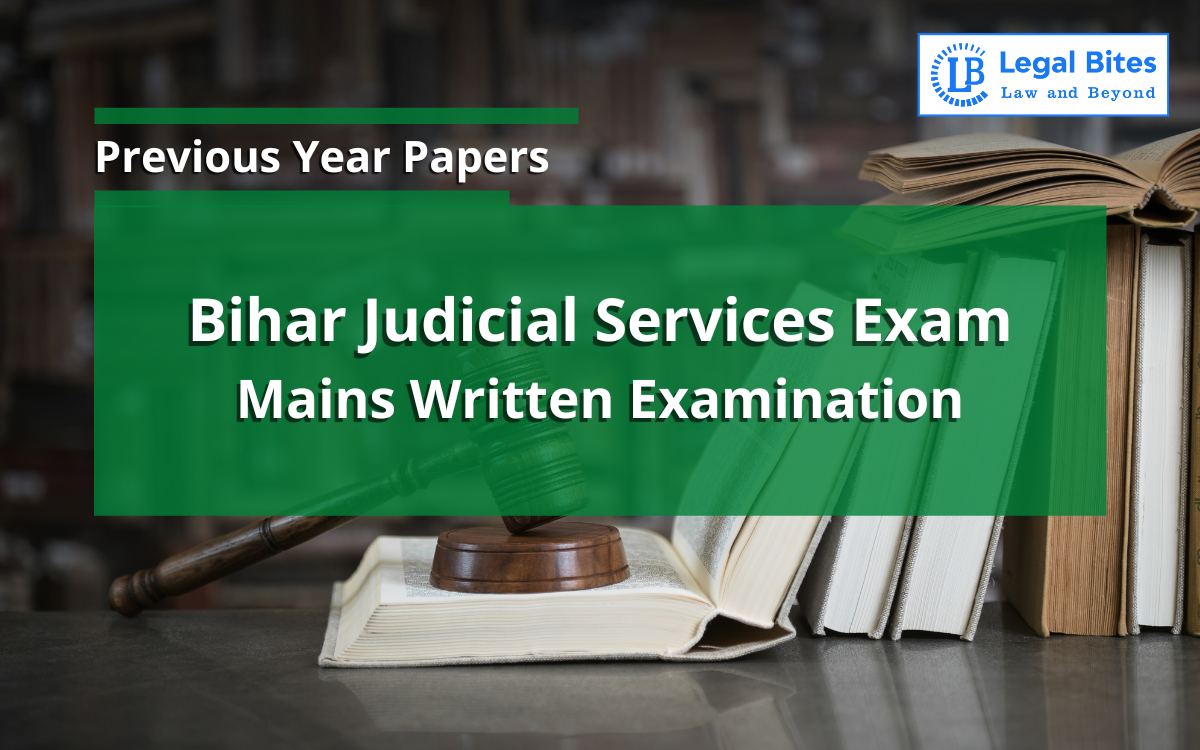Bihar Judicial Services Exam Mains 2023 Previous Year Paper (Law of Evidence and Procedure)
Candidates preparing for Bihar Judicial Services Exam should solve the Bihar Judicial Services Exam Mains 2023 (Law of Evidence and Procedure).

Candidates preparing for Bihar Judicial Services Exam should solve the Bihar Judicial Services Exam Mains 2023 (Law of Evidence and Procedure) and other previous year question papers before they face Prelims and Mains.
It also gives an idea about the syllabus and how to prepare the subjects by keeping the previous year's questions in mind. All toppers are mindful and cognizant of the types of questions asked by the BJS, to be aware of the various tricks and types of questions. This should be done by every aspirant when starting their preparation. It is very important to have an overall understanding of the pattern and design of questions.
Bihar Judicial Services Exam Mains 2023 Previous Year Paper (Law of Evidence and Procedure)
Only practising the authentic question papers will give you a real feel of the pattern and style of the questions. Here's Bihar Judicial Services Exam Mains 2023 Previous Year Paper (Law of Evidence and Procedure).
Bihar Judicial Services Mains Written Examination 2023Law of Evidence and Procedure
Paper: Law of Evidence and Procedure
Time: 3 Hours
Maximum Marks: 150
Note: Marks are indicated against each question
Answer six questions, taking two from Group A, Two from Group B and one each from Group C and Group D
Group – A
Question 1
(a) Explain the meanings of the following (15 Marks)
(i) Pleading
(ii) Decree
(b) Explain in detail who could be a legal representative. (15 Marks)
Question 2
(a) Distinguish between res judicata and estoppel. How far res judicata can be applicable on Foreign Judgements? (15 Marks)
(b) Under what circumstances, the Court may, give order for arrest before judgment? Explain. (15 Marks)
Question 3
(a) Distinguish between the following:
(i) Set-off and Counterclaim
(ii) Recognized agent and Pleader
(b) Who may be joined as defendants? Who are capable to file representative suits?
Group - B
Question 4
1) To what extent the doctrine of res gestae has been incorporated under the Indian Evidence Act? Discuss. (15 Marks)
(b) Write notes on the following: (10 Marks)
(i) Testimony of accomplice
(ii) Presumption as to documents thirty years old
Question 5
(a) Distinguish between the following: (15 Marks)
(i) Public documents and Private documents
(ii) Admission and Confession
(b) Explain the conditions when facts not otherwise relevant become relevant. (10 Marks)
Question 6
(a) Explain how in each case the evidence is proved as relevant: (15 Marks)
(i) Motive
(ii) Preparation
(iii) Previous/Subsequent conduct
(b) "An accomplice shall be a competent witness against an accused person." Can it be substantiated with relevant provisions and illustrations? (10 Marks)
Group - C
Question 7
(a) Discuss the provisions for conducting of arbitral proceedings. (10 Marks)
(b) Write notes on the following: (10 Marks)
(i) International Commercial Arbitration
(ii) Interim Relief by the Court
Question 8
(a) What steps can be taken to discourage unnecessary litigation under the Arbitration and Conciliation Act? (10 Marks)
(b) Distinguish between the following: (10 Marks)
(i) Arbitration agreement and Arbitral award
(ii) Arbitration and Judicial adjudication
Group D
Question 9
(a) What do you mean by Complaint? Briefly explain the essential requisites of complaint. (10 Marks)
(b) Distinguish between the following: (10 Marks)
(i) Complaint and First Information Report
(ii) Summon Case and Warrant Case
Question 10
(a) Discuss the role of Registrar under the Provincial Small Cause Courts Act, 1887. (10 Marks)
(b) Write notes on the following (10 Marks)
(i) Subordination of Courts of Small Causes
(ii) Appeal and Revision from Orders of Courts of Small Causes

